How to Teach Word Families
Watching your students grow into successful readers is one of the most exciting things about teaching kindergarten and first grade. Seeing my students go from pre-emergent readers to fluent readers amazes me every time! After months and months of hard work, something clicks and their reading takes off. But we know that behind the scenes, there was a lot of intentional planning to get them there. One of the most successful strategies I have found to help young students learn to read is teaching with word families.
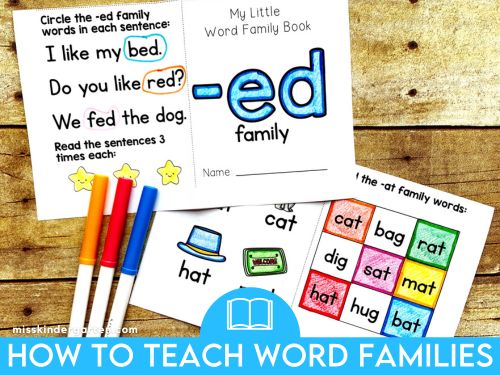
What Are Word Families?
A word family is made up of words that have something in common. In kindergarten and first grade, word families are generally grouped by rime. For example, the words “ham”, “bam”, and “ram” would be in the “-am family.”
The Benefits of Teaching with Word Families
Teaching reading with word families is one of the most effective techniques I have found as an early literacy educator. The repetition that students see and hear within the words is very important. They start to recognize the phonics patterns quickly and use these skills to help them decode words for years to come. Practicing word families also builds on the skill of rhyming and helps to make the connection between sounds being heard and the letters that make them.
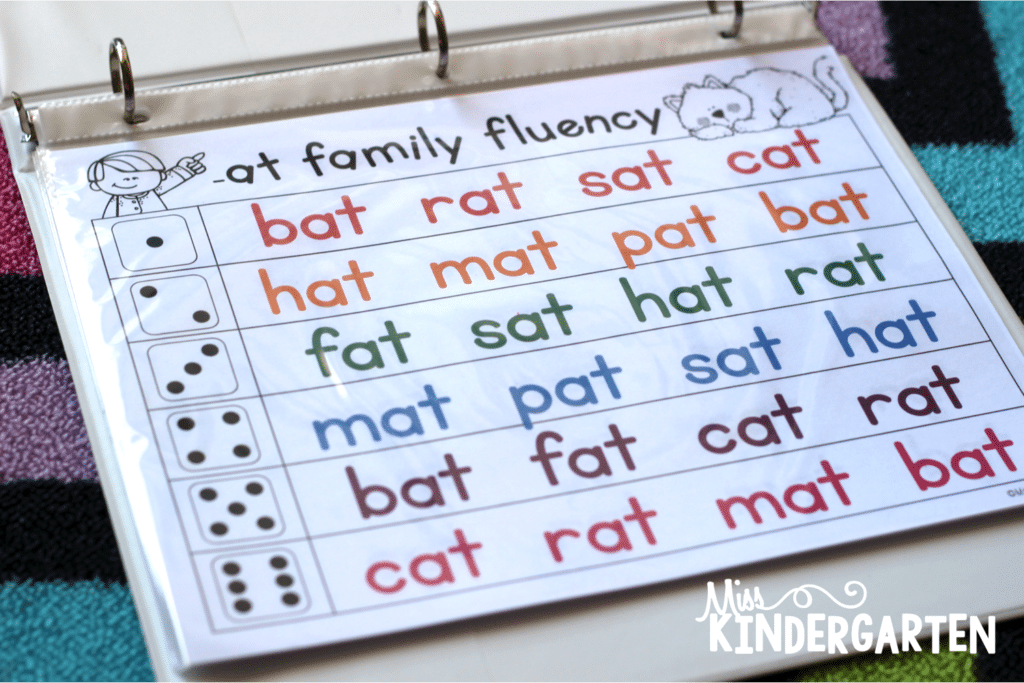
Students begin to understand the basic sounds of letters and words by using word family activities. The process of focusing on a word family allows students to master the “chunk” in the word. Through practice and repetition of the same word family, students become more fluent readers! Check out this FREE resource for using word families to develop reading fluency.
Once students recognize how the rime (the ending chunk of the word) stays the same, they only have to focus on changing the beginning sound. Reading with word families makes decoding much faster and easier for students, which builds their reading confidence.
How to Teach Word Families
There are so many fun and engaging ways to incorporate word families into your reading lessons. Let’s take a look at some of my favorites!
Step One: Introduce Word Families with Pictures
One of the easiest ways to introduce word families is with pictures. This is a great place to start when introducing a new set of words. Pictures help students make the connection between the sounds of words and the meaning of the sounds. And if your emergent readers have not quite mastered their phonemic awareness, it is a great strategy to help them recognize that letters create words. This not only helps with decoding but it also reinforces that letters have sounds.
Before children are even able to talk, they are already making that important connection between an object they see and the word that is used to describe it. Using that natural way of learning helps students to learn new words and understand that when the letter sounds are put together, they form the word that represents the image.
Step Two: Use Hands-On Centers

We all know how much students can learn from hands-on activities. One of the best ways to bring highly-engaging word family practice to your classroom is through centers! By using hands-on centers and word family games as part of the learning process, your students will be more engaged and often won’t even realize they are learning!
Word family practice can be incorporated into literacy centers in many different ways. For example, write and reveal activities allow students to build words in various word families. If you’d like to focus on one particular short vowel word family, you can just add those write and reveal activities to the center. The best part of this activity is that each card is self-checking using clothespins (this also adds a bit of hand-strengthening to the center).
CVC word-building activities are a class favorite year after year! I love that they are easy to store and grab as needed. It’s probably no surprise that these activities find their way to our reading groups for word family practice many times during the year!
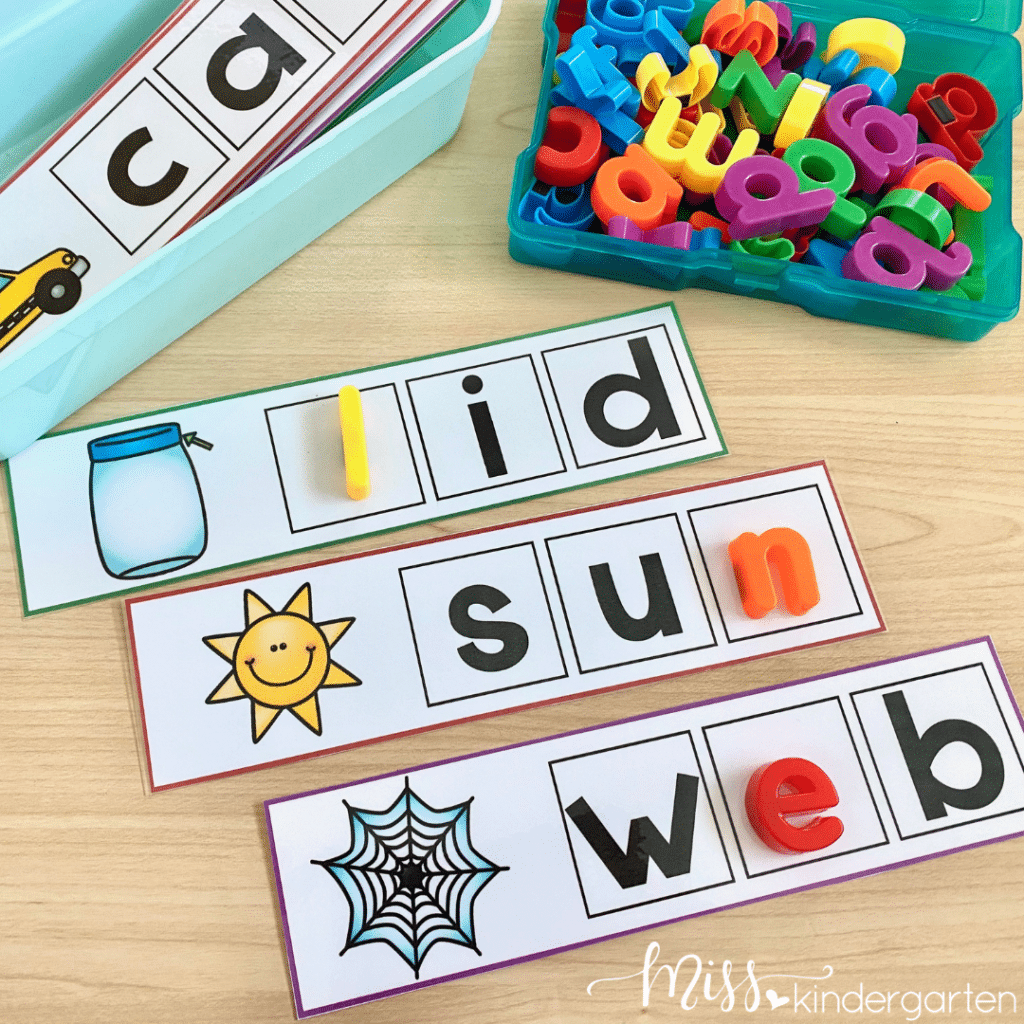
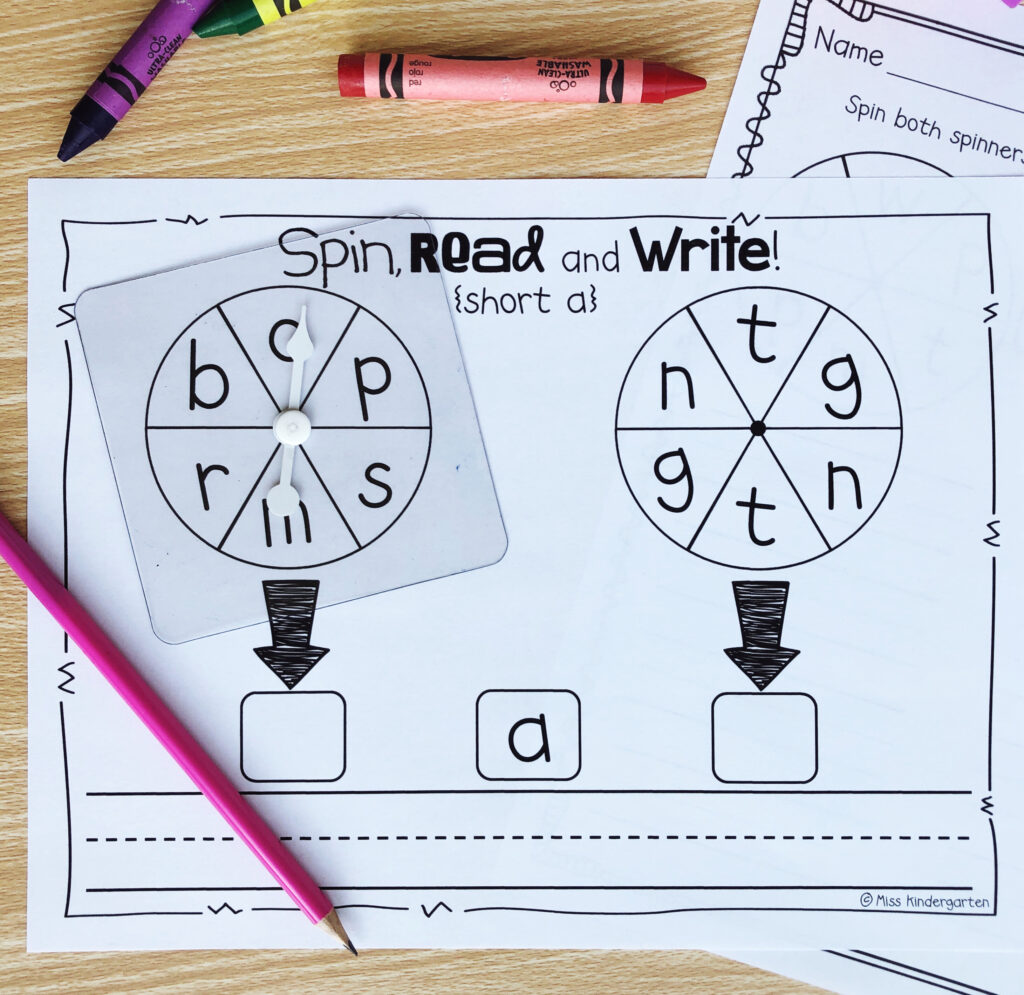
Another reason to use centers for practicing word families is that they can be individualized based on the needs of your students. For young learners who are ready for more of a challenge, you can add multiple word families that use several different vowels.
Step Three: Practice Identifying Word Families Quickly
Word identification is an important part of reading. The faster that students can learn to recognize the “chunks” of word families, the better their reading will be. In my word family mini-books, I incorporated some fun word search activities to help students with this skill.
The first activity is a word quilt. Each square contains a different word with a mix of word family words and other CVC words. Students must find and color all the words from the target word family. They can practice reading the words again once they have found and colored each one.
Students can also put on their detective caps and go searching for word family words in sentences. Before reading the sentences, students search for and circle the word family words. Not only does this give them practice in finding that important chunk, but it also helps them prepare for reading the sentence.
Step Four: Read Word Families in Context
Once students have been introduced to the new word family and read some words, it is important to move those words into a sentence. After all, this is how students will find the words in real life. Reading words in a sentence is one of the final steps of teaching word families.
These simple sentences use basic sight words and word family words to provide a fun way to practice reading sentences. The students love seeing how their reading fluency improves as they read and re-read.
Begin by having your students go through the sentences and circle or highlight any words in the designated word family. Next, have them read each sentence three times. They can do this with a partner, in a center, or even for homework.
Sentence strips are a great way to keep your word family sentences organized. You can laminate the strips and keep each set of word families together on a binder ring. This allows for easy access in small groups or reading centers.
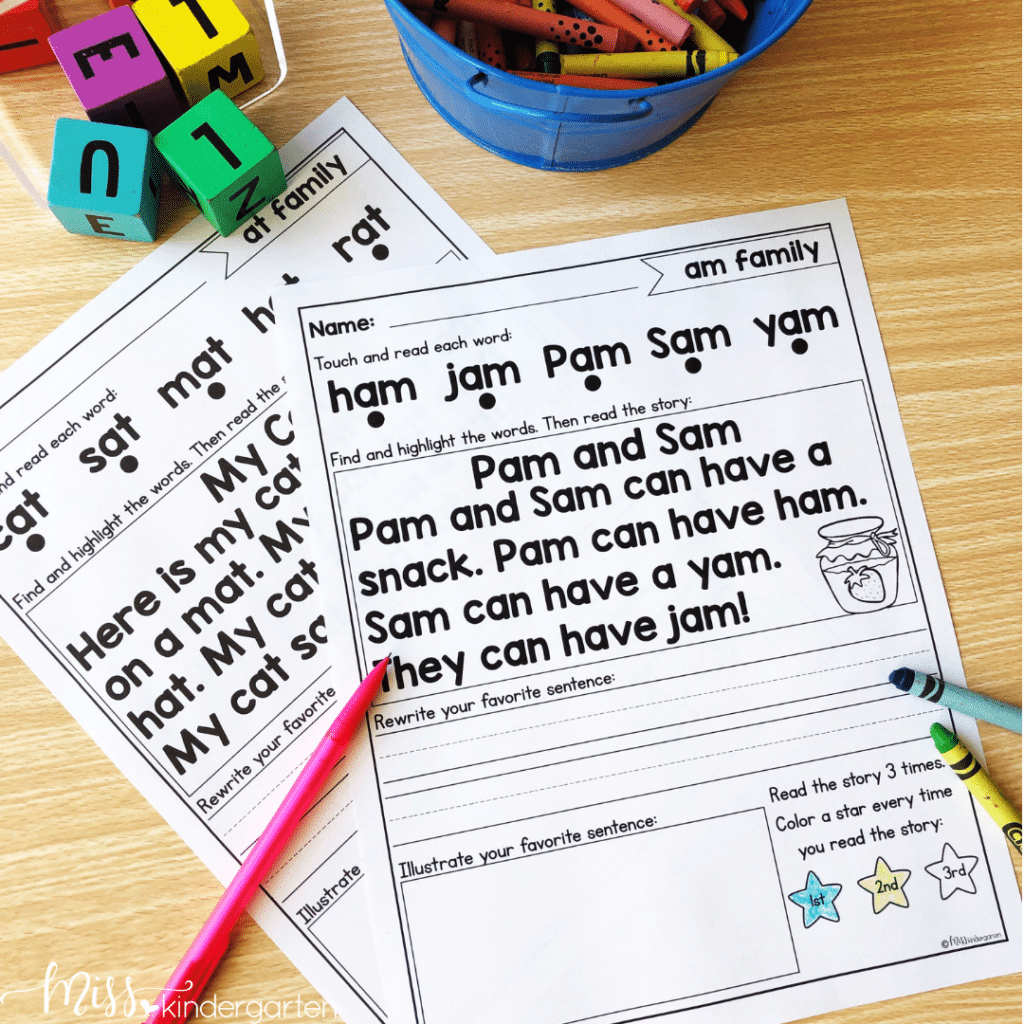
As students find success reading sentences, you can move them on to simple word family reading passages. Students really love knowing that they can read a story all on their own.
The best part of these reading fluency passages is that students can also use this resource to work on reading comprehension. One low prep activity that helps students practice reading with accuracy, fluency, and comprehension? Yes, please! These fluency passages are also helpful because they use the same format for future phonics patterns, like long vowels.
I hope that these activity ideas have shown you that teaching reading with word families can be a lot of fun! Using pictures, games, identification, and context will help your students become budding readers in no time!
Printable Word Family Activities
Are you looking for low prep activities to practice word families? Check out this HUGE bundle of phonics activities for CVC words. It’s full of engaging ways to help your students master word families. All of the activities shown above can be found in this money-saving bundle, plus so much more! Click below to check out everything that is included in this resource.
Small Group Reading Intervention CVC Words Activities Phonics Games & Centers
Save These Word Family Activities
Be sure to save these word family tips and resources to your favorite classroom Pinterest board. Then you can quickly come back whenever you need ideas for teaching reading in your classroom.
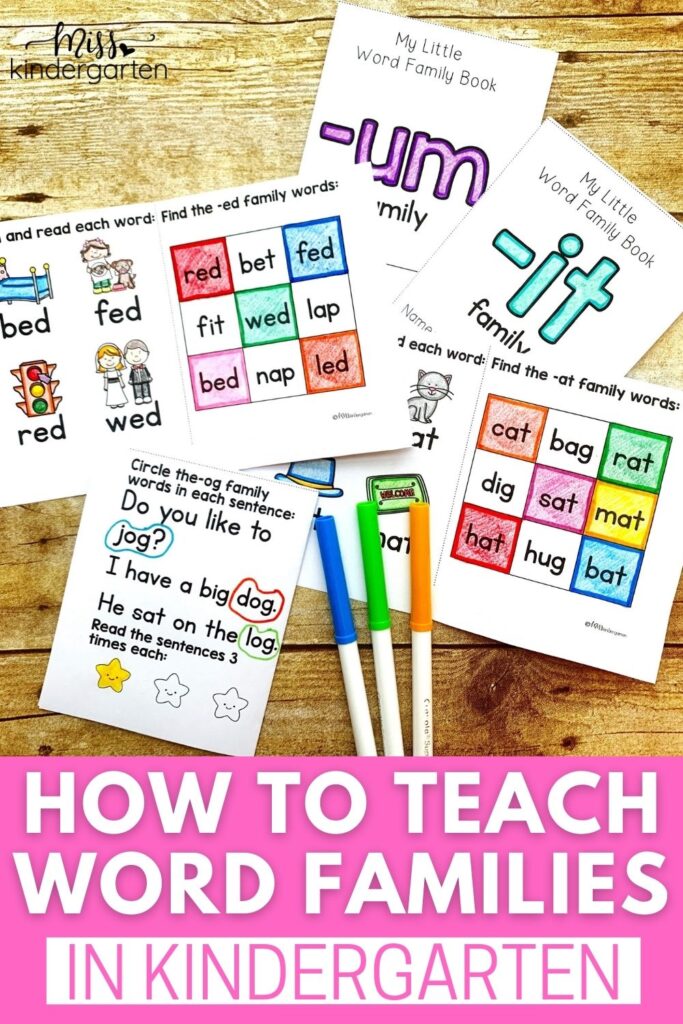

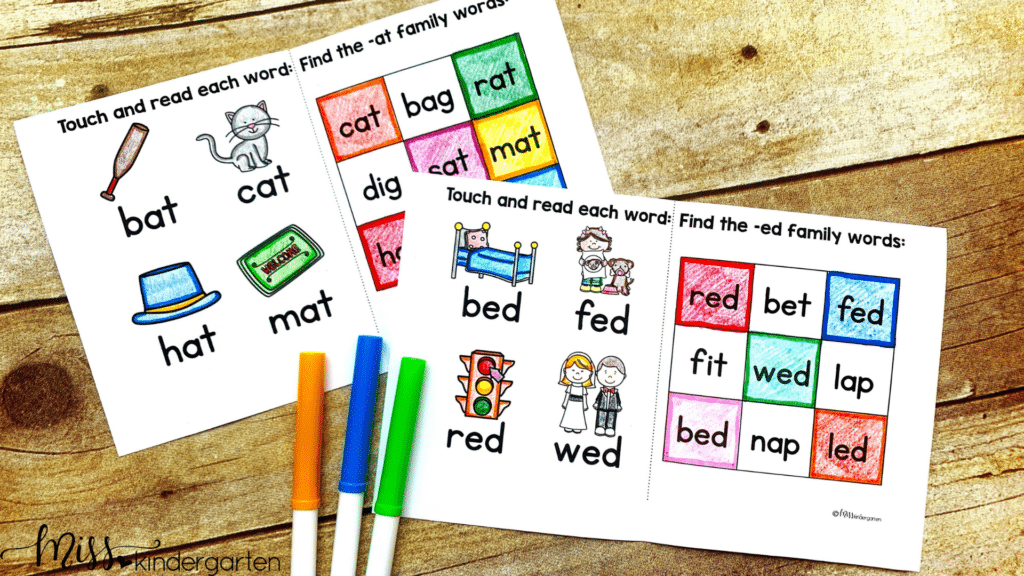
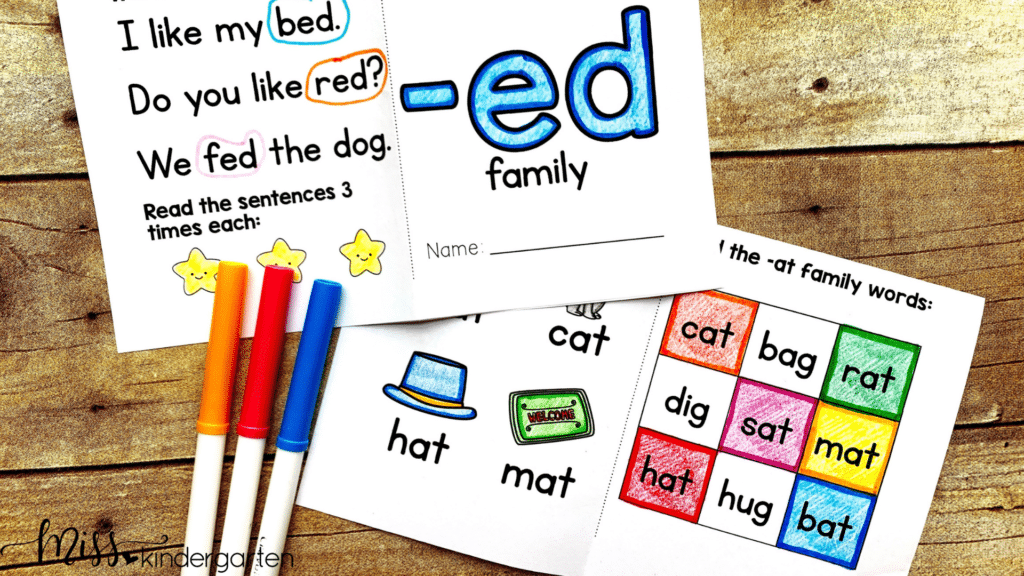
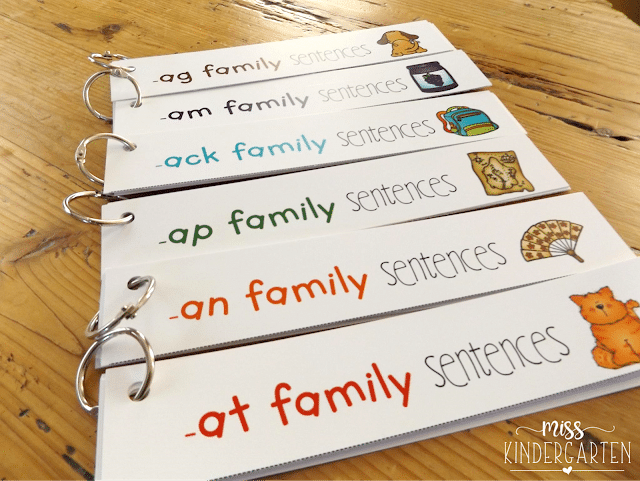
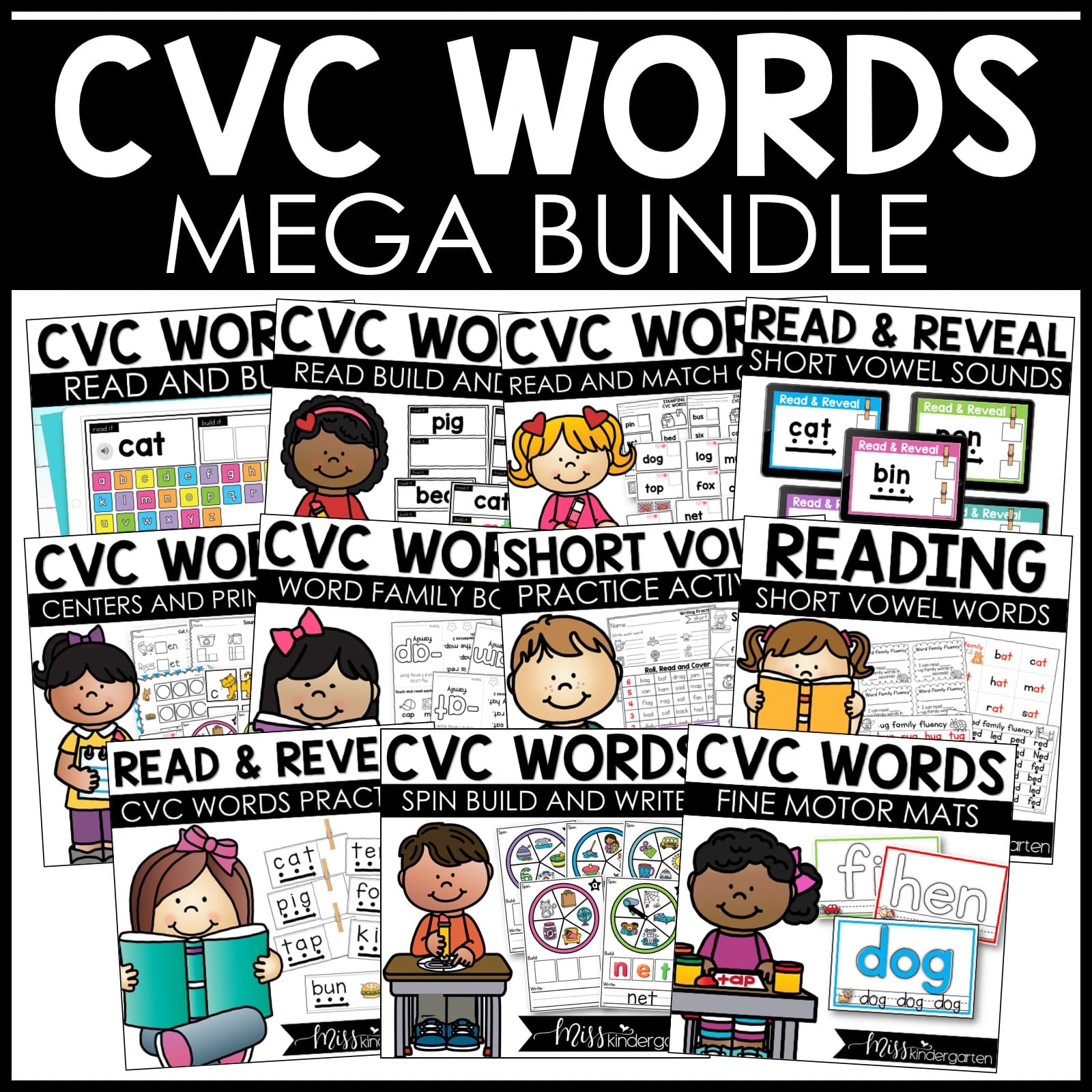
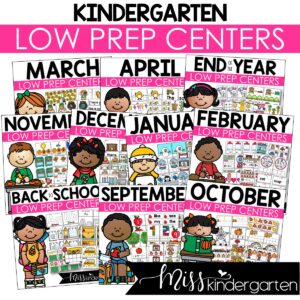
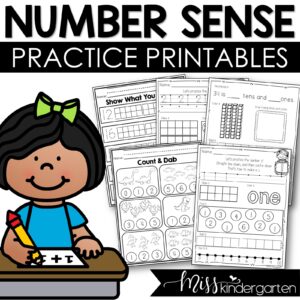
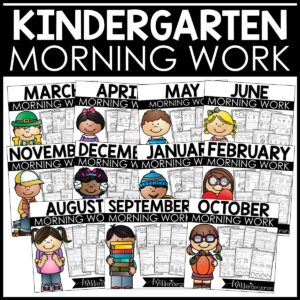

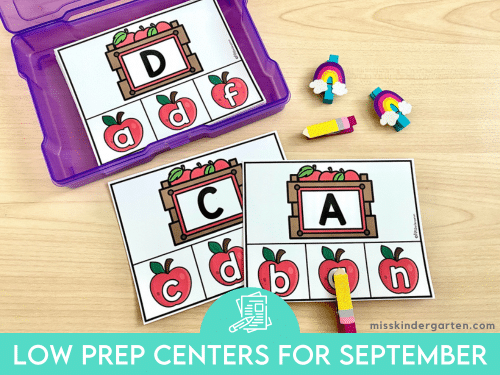
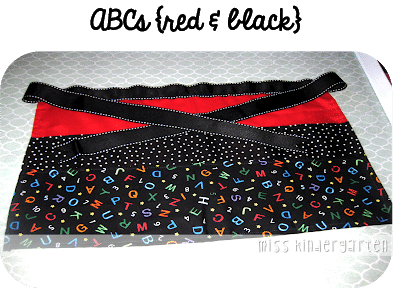
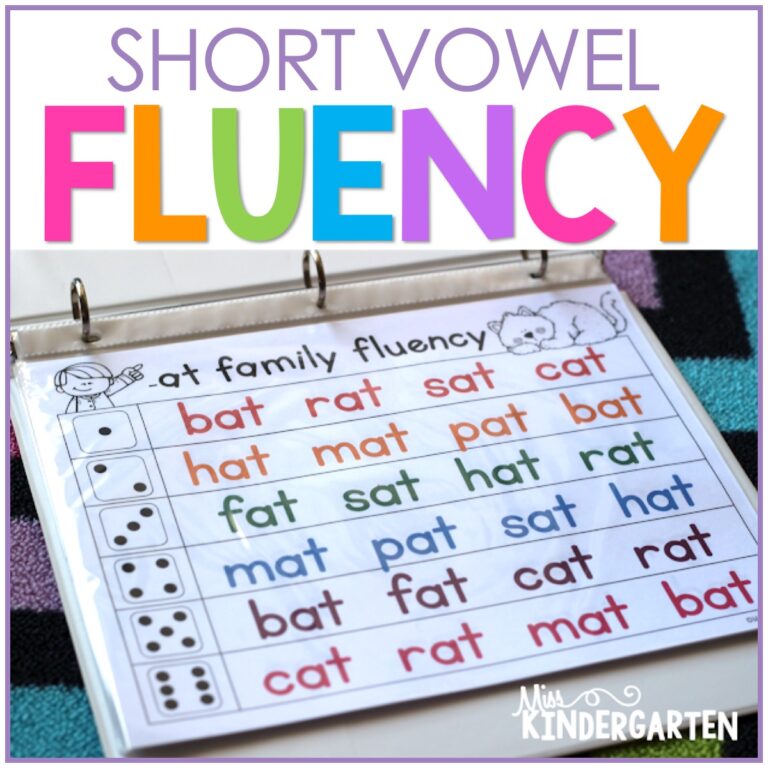
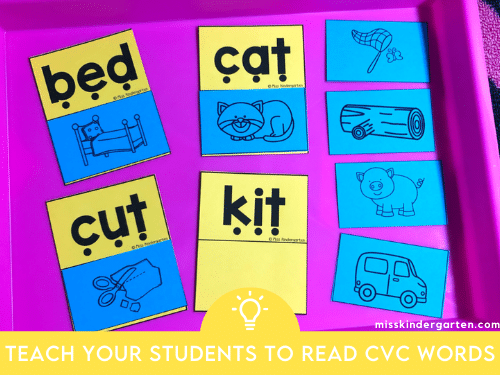


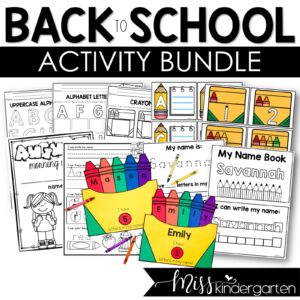 Back to School Activity Bundle
Back to School Activity Bundle 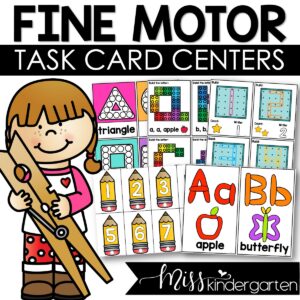 Fine Motor Activities Kindergarten Task Cards Boxes
Fine Motor Activities Kindergarten Task Cards Boxes 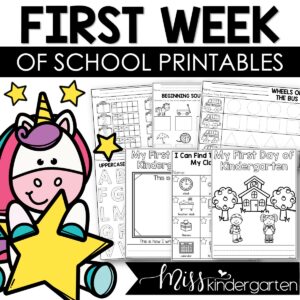 First Week of Kindergarten No Prep Printables Back to School Worksheets
First Week of Kindergarten No Prep Printables Back to School Worksheets 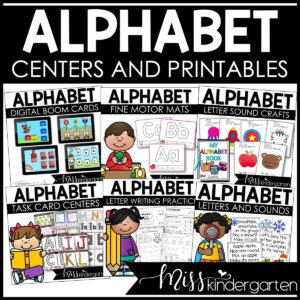 Alphabet Practice Centers and Activities BUNDLE
Alphabet Practice Centers and Activities BUNDLE 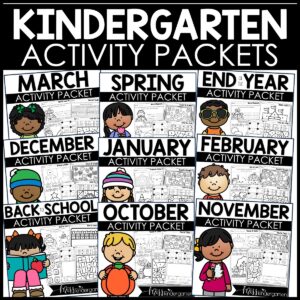 Kindergarten Activity Packet Early Finishers Activities Yearlong Bundle
Kindergarten Activity Packet Early Finishers Activities Yearlong Bundle  Kindergarten Homework Weekly Homework Packets Bundle
Kindergarten Homework Weekly Homework Packets Bundle 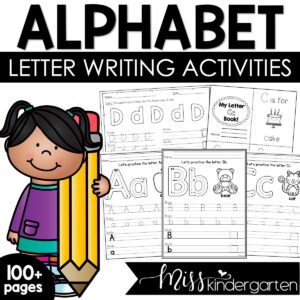 Alphabet Tracing and Writing Practice Printables
Alphabet Tracing and Writing Practice Printables  Back to School Activity Packet Kindergarten Early Finishers Activities
Back to School Activity Packet Kindergarten Early Finishers Activities 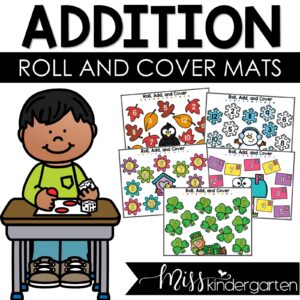 FREE Roll and Cover Addition Mats
FREE Roll and Cover Addition Mats  Alphabet Low Prep Center Free Letter Matching Activity
Alphabet Low Prep Center Free Letter Matching Activity 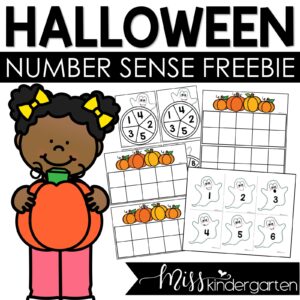 Halloween Number Sense Center Freebie
Halloween Number Sense Center Freebie 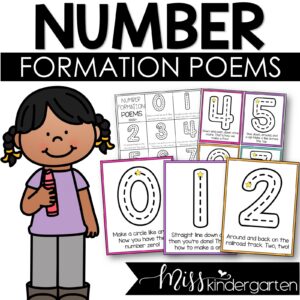 Free Number Formation Poems and Posters
Free Number Formation Poems and Posters 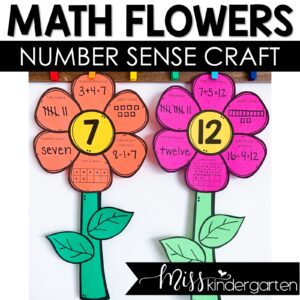 Math Flowers Free Spring Math Craft
Math Flowers Free Spring Math Craft  First Sound Fluency Freebie
First Sound Fluency Freebie 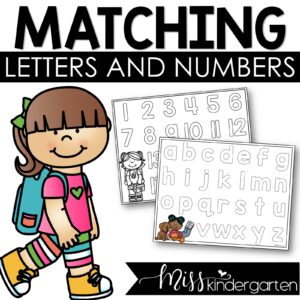 Alphabet Letter Match Freebie
Alphabet Letter Match Freebie 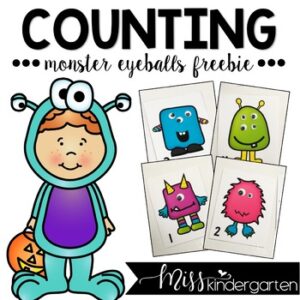 Monster Counting Freebie
Monster Counting Freebie 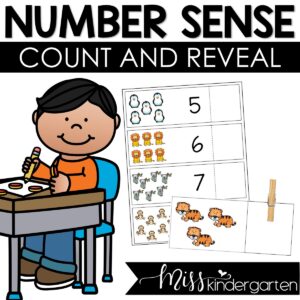 Free Kindergarten Counting Center Count and Reveal
Free Kindergarten Counting Center Count and Reveal  2D and 3D Shapes Worksheets Freebie
2D and 3D Shapes Worksheets Freebie  Alphabet Letters and Sounds Practice Free Download
Alphabet Letters and Sounds Practice Free Download 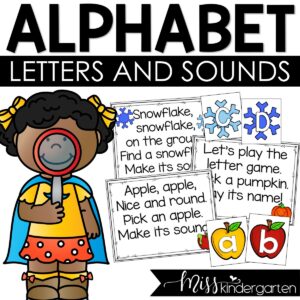 Alphabet Sounds and Alphabet Letters Practice Full Year Chants and Poems
Alphabet Sounds and Alphabet Letters Practice Full Year Chants and Poems 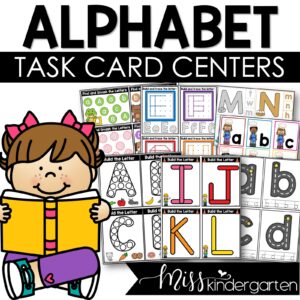 Alphabet Task Cards Centers and Activities
Alphabet Task Cards Centers and Activities  Alphabet Practice and Number Sense Activities Kindergarten Math MEGA Bundle
Alphabet Practice and Number Sense Activities Kindergarten Math MEGA Bundle 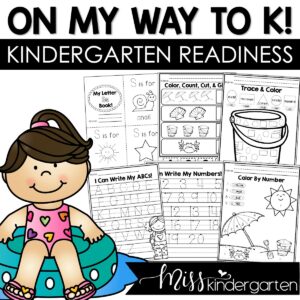 Kindergarten Readiness Summer Packet | PreK and Preschool Review
Kindergarten Readiness Summer Packet | PreK and Preschool Review 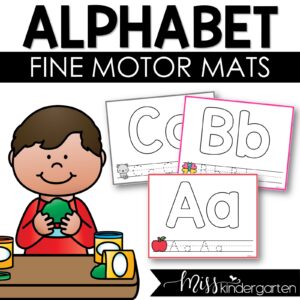 Alphabet Playdough Mats
Alphabet Playdough Mats  Fall Activities for Kindergarten
Fall Activities for Kindergarten  April Kindergarten Centers Write and Wipe Activities & Sensory Bins
April Kindergarten Centers Write and Wipe Activities & Sensory Bins  St. Patricks Day Centers for Kindergarten
St. Patricks Day Centers for Kindergarten  Transportation Themed Math and Literacy Centers PreK & Kindergarten Activities
Transportation Themed Math and Literacy Centers PreK & Kindergarten Activities  Blends and Digraphs Playdough Mats | Fine Motor Skills Activities
Blends and Digraphs Playdough Mats | Fine Motor Skills Activities  Back to School Math and Literacy Low Prep Centers
Back to School Math and Literacy Low Prep Centers  September Math and Literacy Low Prep Centers for Kindergarten
September Math and Literacy Low Prep Centers for Kindergarten 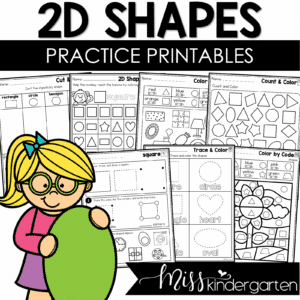 2D Shapes Worksheets for Kindergarten Math Practice
2D Shapes Worksheets for Kindergarten Math Practice 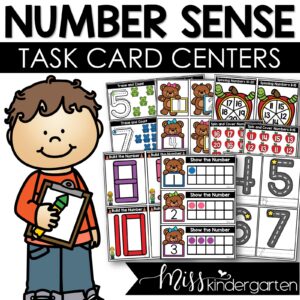 Kindergarten Math Centers Number Sense Task Cards and Activities
Kindergarten Math Centers Number Sense Task Cards and Activities  Addition and Subtraction Practice Activities BUNDLE
Addition and Subtraction Practice Activities BUNDLE  Writing Numbers 1-20 Worksheets and Mini Books
Writing Numbers 1-20 Worksheets and Mini Books 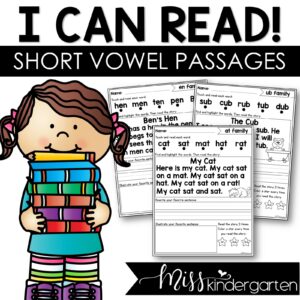 Reading Fluency Passages Short Vowel Words
Reading Fluency Passages Short Vowel Words 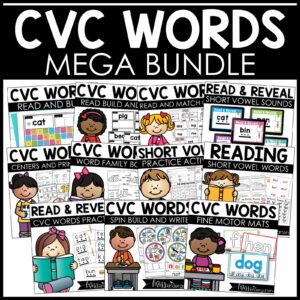 Small Group Reading Intervention CVC Words Activities Phonics Games & Centers
Small Group Reading Intervention CVC Words Activities Phonics Games & Centers 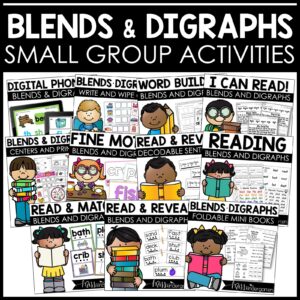 Small Group Reading Activities Short Vowel Blends and Digraphs Games & Centers
Small Group Reading Activities Short Vowel Blends and Digraphs Games & Centers  Blends and Digraphs Centers & Worksheets Short Vowel Reading Practice
Blends and Digraphs Centers & Worksheets Short Vowel Reading Practice  Blends and Digraphs Roll and Read Reading Fluency Short Vowel Words
Blends and Digraphs Roll and Read Reading Fluency Short Vowel Words  I Can Read Sight Word Fluency Kindergarten Worksheets
I Can Read Sight Word Fluency Kindergarten Worksheets 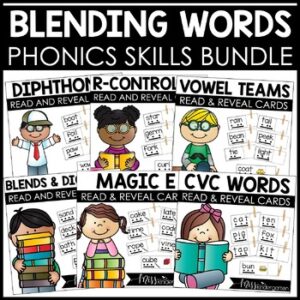 Read & Reveal Decoding Words Cards Blending and Segmenting Science of Reading
Read & Reveal Decoding Words Cards Blending and Segmenting Science of Reading 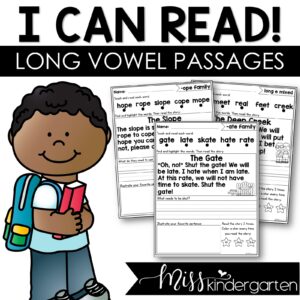 Reading Fluency Passages Long Vowel Words
Reading Fluency Passages Long Vowel Words  Kindergarten Sight Words Centers
Kindergarten Sight Words Centers  Reading Fluency Passages Short Vowel Blends and Digraphs
Reading Fluency Passages Short Vowel Blends and Digraphs  Kindergarten Phonics Activities Word Work Centers Word Families Books Bundle
Kindergarten Phonics Activities Word Work Centers Word Families Books Bundle 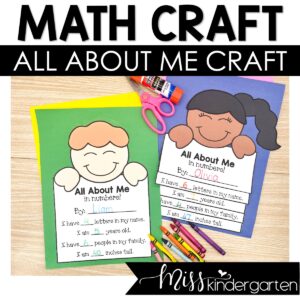 Math About Me Craft All About Me Kindergarten Back to School Craft
Math About Me Craft All About Me Kindergarten Back to School Craft  Mother's Day Craft Kindergarten Gift Idea Questionnaire & Activities
Mother's Day Craft Kindergarten Gift Idea Questionnaire & Activities 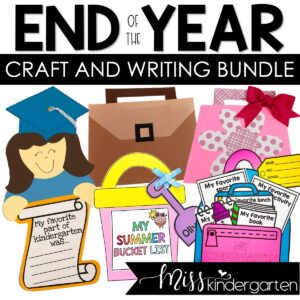 End of Year Crafts Bundle
End of Year Crafts Bundle  St Patricks Day Activities Leprechaun Craft and Writing Templates
St Patricks Day Activities Leprechaun Craft and Writing Templates  100th Day of School Craft & Writing Activity
100th Day of School Craft & Writing Activity 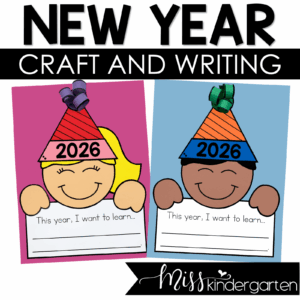 New Year Craft and Writing for 2026
New Year Craft and Writing for 2026 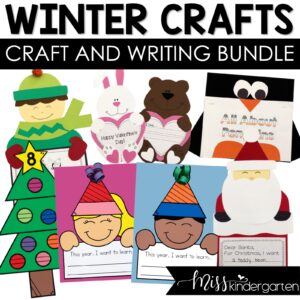 Winter Crafts Bundle Kindergarten Crafts
Winter Crafts Bundle Kindergarten Crafts 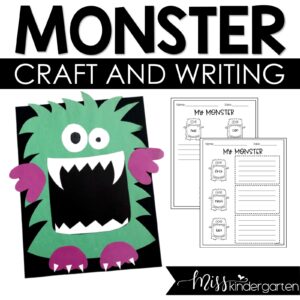 Halloween Craft Monster Craft and Writing
Halloween Craft Monster Craft and Writing  Easy Fall Crafts for Kindergarten Bundle
Easy Fall Crafts for Kindergarten Bundle 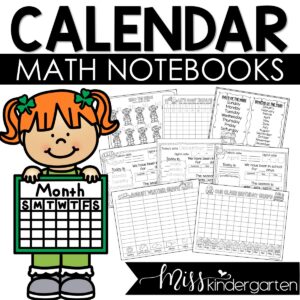 Calendar Math Notebook for Kindergarten and First Grade (Spanish Version Included)
Calendar Math Notebook for Kindergarten and First Grade (Spanish Version Included) 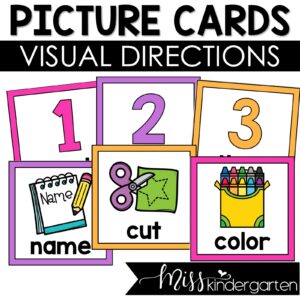 Picture Directions Visual Cue Cards
Picture Directions Visual Cue Cards  Kindergarten Monthly Writing Templates
Kindergarten Monthly Writing Templates 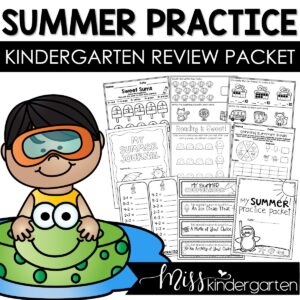 Kindergarten Summer Review Packet | Summer Practice of Kindergarten Skills
Kindergarten Summer Review Packet | Summer Practice of Kindergarten Skills 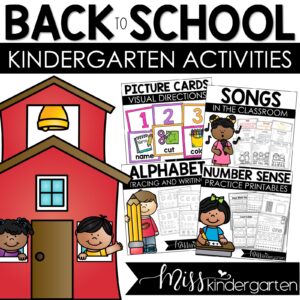 Kindergarten Back to School Kit Classroom Management and Activities Bundle
Kindergarten Back to School Kit Classroom Management and Activities Bundle 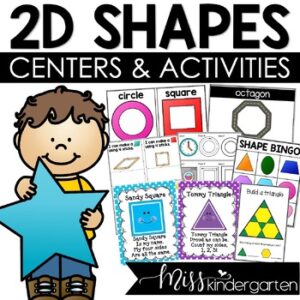 2D Shapes Centers and Activities
2D Shapes Centers and Activities 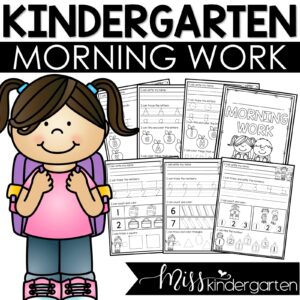 August Morning Work for Kindergarten
August Morning Work for Kindergarten  End of the Year Math Games for Kindergarten
End of the Year Math Games for Kindergarten  Scissor Skills Cutting Practice Worksheets
Scissor Skills Cutting Practice Worksheets  Phonics Reading Intervention Short Vowel CVC Words Games & Worksheets
Phonics Reading Intervention Short Vowel CVC Words Games & Worksheets  Kindergarten Packet Math and Literacy Review Worksheets for the YEAR
Kindergarten Packet Math and Literacy Review Worksheets for the YEAR 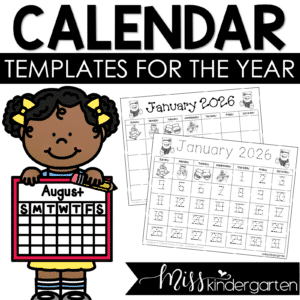 Monthly Editable Calendar Templates 2025 & 2026 plus Yearly Updates!
Monthly Editable Calendar Templates 2025 & 2026 plus Yearly Updates! 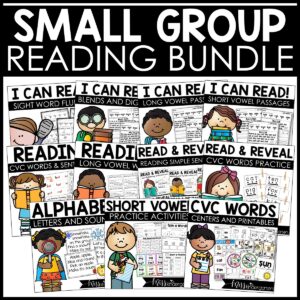 Small Group Reading Intervention & Phonics Activities MEGA Bundle
Small Group Reading Intervention & Phonics Activities MEGA Bundle 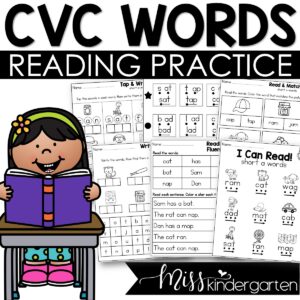 CVC Words Worksheets Short Vowel Reading Fluency Practice
CVC Words Worksheets Short Vowel Reading Fluency Practice 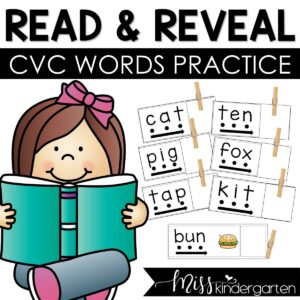 CVC Words Read and Reveal Reading Words Practice
CVC Words Read and Reveal Reading Words Practice  Word Mapping CVC Words Worksheets Science of Reading
Word Mapping CVC Words Worksheets Science of Reading  Decodable Reading Fluency Passages FREEBIE
Decodable Reading Fluency Passages FREEBIE  Playdough Mats Math and Literacy BUNDLE
Playdough Mats Math and Literacy BUNDLE  Dear Santa Craft and Writing Templates
Dear Santa Craft and Writing Templates